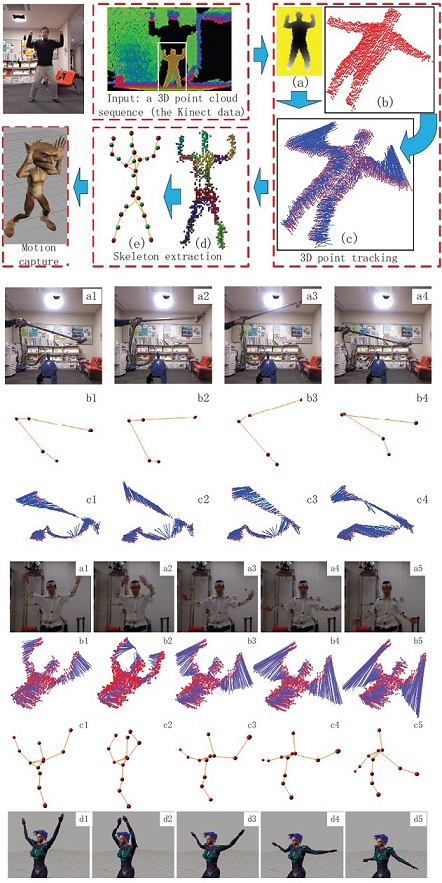Category-Specific Single-View 3D Reconstruction
In this study, we automatically mine the reconstruction knowledge from RGB-D images, and apply such knowledge to ordinary RGB images for single-view 3D reconstruction.
1. Unsupervised learning We do not need to label target objects in RGB-D images. These objects are automatically discovered from cluttered environment. Then, corresponding object parts are automatically aligned.
2. Category-specific Modeling For each category, we learn a model to recover an object’s 1) 3D pose and 2) structure deformations using its 2D appearance.
3. Domain transferring from RGB-D images to RGB images We learn 3D reconstruction knowledge from ubiquitous RGB-D images, but apply this knowledge to RGB images.
Publications
Q. Zhang, X. Song, X. Shao, H. Zhao, R. Shibasaki, “When 3D Reconstruction Meets Ubiquitous RGB-D Images”, in CVPR, 2014.
.
Unsupervised Object Skeleton Extraction from Kinect Video Sequences
This study automatically extracts the hidden dynamic structures of objects from unlabeled RGB-D video sequences.
Publications
Q. Zhang, X. Song, X. Shao, R. Shibasaki, H. Zhao, “Unsupervised skeleton extraction and motion capture from 3D deformable matching”, Neurocomputing, Elsevier, pp.170-182, 2013.

.
Object Discovery from Unlabeled 3D Point Clouds of a Large Urban Environment
The 3D point clouds are collected by slant laser scanners on an intelligent vehicle.
Publications
Q. Zhang, X. Song, X. Shao, H. Zhao, R. Shibasaki, “Start from Minimum Labeling: Learning of 3D Object Models and Point Labeling from a Large and Complex Environment”, in ICRA, 2014
Q. Zhang, X. Song, X. Shao, H. Zhao, R. Shibasaki, “Unsupervised 3D Category Discovery and Point Labeling from a Large Urban Environment”, in ICRA 2013

.
Mining Evacuation Behavior Patterns during Large-Scale Disaster from GPS Data

Publications
X. Song, Q. Zhang, Y. Sekimoto, T. Horanont, S. Ueyama, R. Shibasaki, “Intelligent System for Human Behavior Analysis and Reasoning Following Large-Scale Disasters,” IEEE Intelligent Systems, vol. 28, no. 4, pp. 35-42, July-Aug. 2013.
X. Song, Q. Zhang, Y. Sekimoto, R. Shibasaki, N. J. Yuan, X. Xie, “A Simulator of Human Emergency Mobility following Disasters: Knowledge Transfer from Big Disaster Data”, in AAAI 2015.
X. Song, Q. Zhang, Y. Sekimoto, R. Shibasaki, “Prediction of Human Emergency Behavior and their Mobility following Large-scale Disaster”, in KDD, 2014.
X. Song, Q. Zhang, Y. Sekimoto and R. Shibasaki, “Intelligent System for Urban Emergency Management During Large-scale Disaster”, in AAAI, 2014.
X. Song, Q. Zhang, Y. Sekimoto, T. Horanont, S. Ueyama, R. Shibasaki, “Modeling and Probabilistic Reasoning of Population Evacuation During Large-scale Disaster”, in KDD 2013.